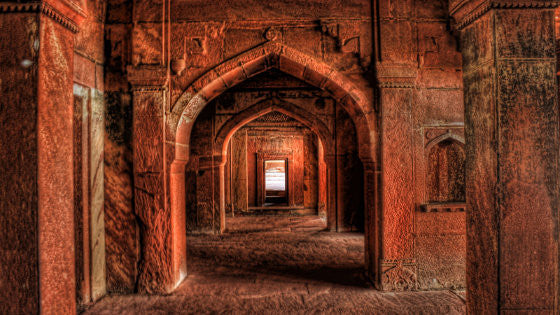Featured
- Get link
- X
- Other Apps
The Rise of the Mughal Empire: Bābur’s Legacy

The Mughal dynasty, a powerful Muslim ruling family of Turkic-Mongol origin, governed much of northern India from the early 16th to the mid-18th century. Its legacy was marked by an extraordinary span of effective rule, the impressive talents of its rulers across seven generations, and a remarkable administrative system. Even as the empire waned and its authority diminished in the mid-18th century, the Mughal name continued to linger, with the dynasty clinging to life until the British dissolved it in the 19th century. What set the Mughals apart, however, was their attempt to unite Hindus and Muslims in a single, harmonious Indian state, a feat that few other empires in the region could achieve.
Bābur: The Founder of the Mughal Dynasty
The foundations of the Mughal Empire were laid by Bābur, a Chagatai Turkic prince whose lineage was as distinguished as it was tumultuous. Bābur was born into a lineage of great conquerors: on his father’s side, he descended from Timur (Tamerlane), the feared Turkic conqueror, and on his mother’s side, he traced his ancestry to Genghis Khan through Chagatai, his second son. Bābur’s father, Umar Shaykh Mīrzā, ruled the small principality of Fergana, located to the north of the Hindu Kush mountain range. Upon his father’s death, Bābur inherited Fergana in 1494 at the young age of 12.
But Bābur’s ambitions stretched far beyond his modest inheritance. In 1504, he seized Kabul and Ghaznī, establishing a foothold in the region. In 1511, he captured the fabled city of Samarkand, a jewel of Central Asia. However, it was soon clear to Bābur that his true destiny lay further south, beyond the formidable Safavid dynasty in Persia and the rising power of the Uzbeks. With the political situation in Central Asia becoming increasingly precarious, Bābur set his sights on India, where the fractured political landscape promised an opportunity for conquest.
Bābur’s strategic focus shifted towards Punjab, an area once ruled by his ancestor Timur, and he began a series of campaigns between 1519 and 1524, capturing cities like Bhera, Sialkot, and Lahore. His ambitions to conquer Hindustan (northern India) were well underway.
The Conquest of India: Bābur’s Victories
By 1526, the time had come for Bābur to march into the heart of India. His path to Delhi was made easier by the fractured state of India’s political order. Support from local Delhi nobles gave Bābur the advantage as he faced the sultan of Delhi, Ibrāhīm Lodī, whose forces were ill-prepared for the battle ahead. The confrontation came at the First Battle of Panipatin April 1526, where Bābur decisively defeated Lodī’s army, securing control over Delhi and Agra. This victory opened the gates for Bābur to conquer Hindustan and solidified his rule in northern India.
However, his troubles were far from over. The Rajput confederacy, led by the formidable Rana Sanga of Mewar, threatened to reclaim northern India and challenge Bābur’s growing dominance. Undeterred, Bābur marched against the Rajputs and, at the Battle of Khanua in March 1527, delivered a crushing defeat to Rana Sanga’s forces through brilliant tactical maneuvering. Bābur’s victory was crucial in securing Mughal power in the region and quelling the Rajput threat.
Bābur’s military campaigns didn’t end with the Rajputs. He turned east to face the Afghan forces that were rising in rebellion. In 1529, at the Battle of Ghaghara near Varanasi, Bābur defeated the combined forces of the Afghans and the Sultan of Bengal. While his military success seemed unassailable, Bābur’s health began to decline, and developments in Central Asia demanded his attention.
Bābur’s Legacy and the End of His Life
Despite his successes, Bābur’s final years were marred by personal and political challenges. Forced to withdraw from his southern campaigns due to worsening health and the ongoing unrest in Central Asia, Bābur’s empire was far from secure when he died in December 1530 near Lahore. His son, Humayun, inherited the empire, but the challenges of maintaining Bābur’s vast territories would prove difficult, with many internal and external pressures threatening to unravel the fledgling Mughal state.
Even so, Bābur’s legacy was profound. His military conquests and the establishment of the Mughal Empire laid the foundation for one of the most powerful and culturally rich dynasties in Indian history. His descendants would go on to rule much of India for over two centuries, leaving an indelible mark on the subcontinent's history, culture, and architecture.
Popular Posts
The History of the Mughal Empire: A Legacy of Culture and Power
- Get link
- X
- Other Apps
Comments
Post a Comment